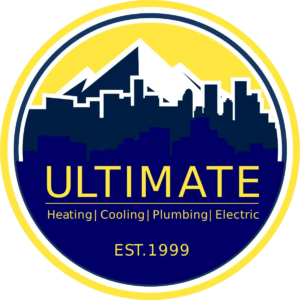During our 40+ years as a trusted HVAC company in Denver, the most common problem we’ve dealt with is failing ductwork. Considering it’s used for transmitting cold and hot air year-round and that most homes have at least one hundred feet of ductwork installed, there’s a lot that can go wrong. Plus, when you factor in that nearly a quarter of the city’s homes were built before 1939, and over half of them have five or more rooms, duct problems become even more prevalent.
Whatever the age or style of your property, if you have ductwork you’ll eventually encounter a problem with it. Read below to learn more about the causes, risks, and signs of faulty ductwork.
How to Tell if Your Ductwork is Compromised
Identifying ductwork problems is easy. Tell-tale signs that something’s gone awry are:
• Unequal airflow. If a vent in a room is blowing weaker air compared to the others, then there’s an issue.
• Unusual noises, such as screeching, clanging, rattling, squealing, and banging, are signs that a heating or cooling part is wearing out. However, not all noises bear bad news, like hearing air moving in your ductwork or the quiet hum of your outdoor compressor.
• Detached ductwork fittings. Missing or loose bolts, nuts, washers, clamps, threaded rods, and anything else that keeps your ducts in place requires immediate attention.
Unsavory fumes wafting around your ductwork are an indicator of an overheating blower motor, leaky heat exchanger, mildew/mold in the ducts, or even plumbing-related problems.
• Higher-than-normal energy bills. Drafts, leaks, and inefficient HVAC equipment add an average of $300 per year to home energy bills.
Also, keep an eye out for excessive amounts of indoor dust, bent ducts, failing duct seals, and room temperatures not in line with the thermostat settings.
Causes of Compromised Ductwork
Human error and natural wear and tear are the primary causes of compromised ductwork. Here’s why:
• Improper installation of HVAC equipment increases space heating and cooling costs by up to 30%, according to the National Institute of Standards and Technology (NIST). Examples of installation faults include poorly assembled ductwork and technicians fitting ductwork that’s too small for the compressor unit, which leads to leaks and wasted energy.
• Age determines the likelihood of parts wearing out, as every individual component has a maximum lifespan. The Environmental Protection Agency (EPA) recommends inspecting HVAC systems older than 10 years. Further, ENERGY STAR®’s advice is to replace a boiler or furnace older than 15 years.
• Dirt or dust build-up blocks airflow through vents, according to the Department of Energy. This forces your system to work harder than necessary to distribute the air, leading to overly stressed compressors, heat exchangers overheating, and other parts wearing out prematurely.
Likewise, loose duct joints or defective seals decrease your ductwork’s ability to transmit air effectively. Nearly a third of duct air is lost through leaks, according to ENERGY STAR®.
Risks of Inefficient Ductwork
We all know that Colorado’s temperatures vary wildly throughout the year. With inefficient or poorly maintained HVAC equipment, you risk troublesome mid-season breakdowns. Other problems caused by inefficient ductwork include:
• Expensive replacement of failed furnace components. For example, a replacement capacitor from the original manufacturer costs upwards of $400, including installation. When a crucial part like this fails, there’s also the risk of connected parts failing too, such as the heat exchanger cracking because of overheating.
• Fires caused by faulty electrical wiring, or flammable objects trapped in the ductwork.
Health problems triggered by the build-up of mold, allergens, and dampness in ducts, air filters, and rooms.
• Moisture in the ducts damaging your home’s interior, causing paint or wallpaper blisters, crumbling plaster, and wood rot.
• Carbon monoxide (CO) poisoning due to poor ductwork ventilation. Every year, there are over 400 CO poisoning deaths in the US. With a properly sealed and freely flowing duct system, harmful gases are expelled outdoors reliably and efficiently.
How to Fix Compromised Ductwork
The best solution for defective ductwork is to get it looked at by a heating and cooling professional. Besides resolving the problem quicker than most homeowners, and following the Manual JSD process, repair specialists provide a range of additional ductwork services. These include:
Whole-house inspection and repair of ductwork seals, as well as airflow tests:
• Installing (or improving existing) ductwork insulation to boost HVAC performance and reduce heat loss
• Optimizing thermostats and balancing airflow
• Duct cleaning
If you’re battling serious heating and cooling issues regularly—especially expensive ones—consider a total upgrade. However, before you agree on any work, make sure your technician follows the ENERGY STAR® Quality Installation Guidelines. Following this checklist guarantees that the HVAC equipment you buy is properly installed and right for your home.
The City and County of Denver run a Climate Action Rebate for homeowners, as part of their long-term plan to ensure residents use highly efficient, all-electric energy equipment. They offer up to a $9,000 rebate on air or ground source heat pumps, as well as $5,400 for mini-split versions. Such setups are well-suited to multi-story or older homes as they offer higher efficiency and reliability. For help with your Denver HVAC duct problems, call us at [theme_company_telephone] or send us a message.


